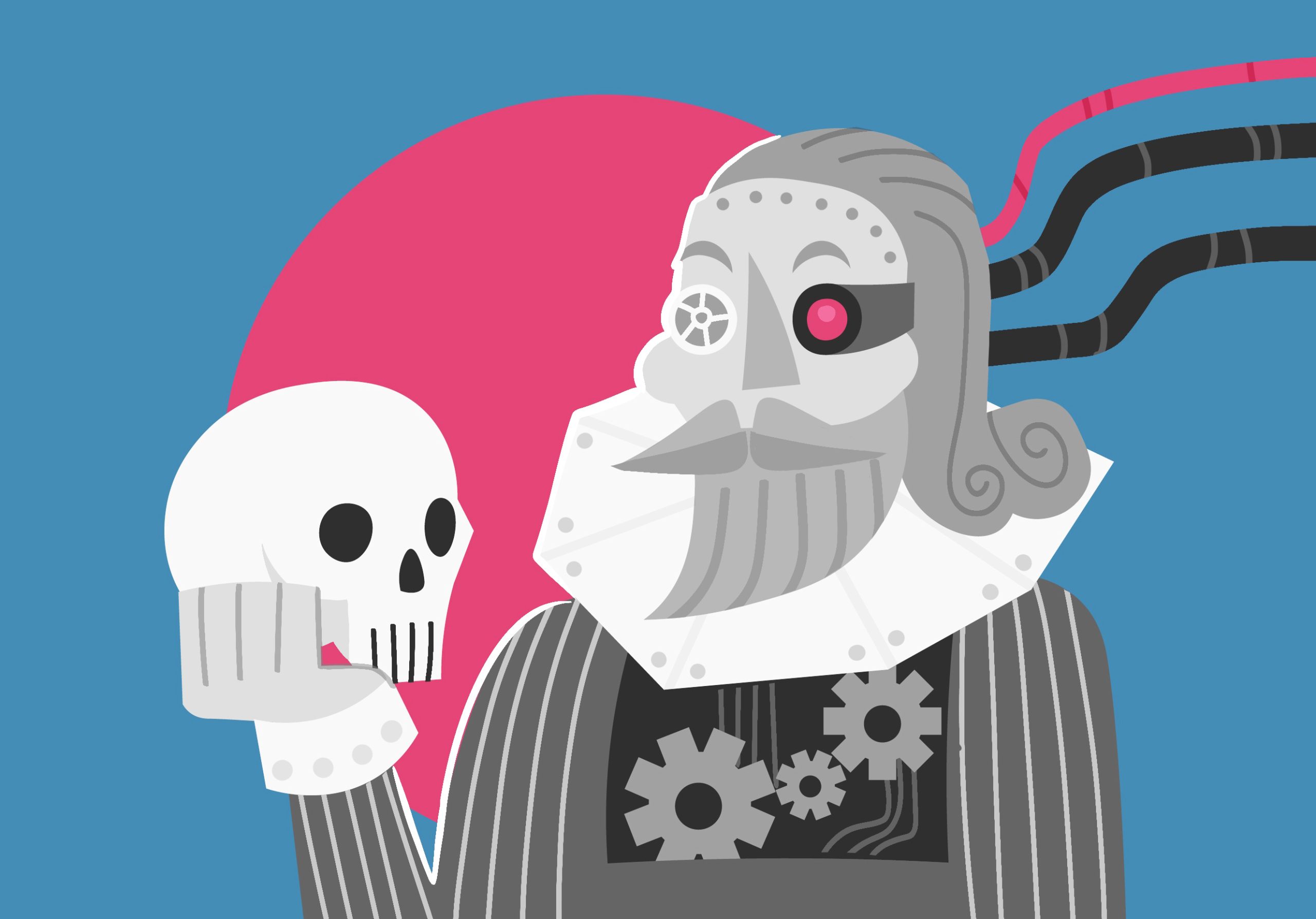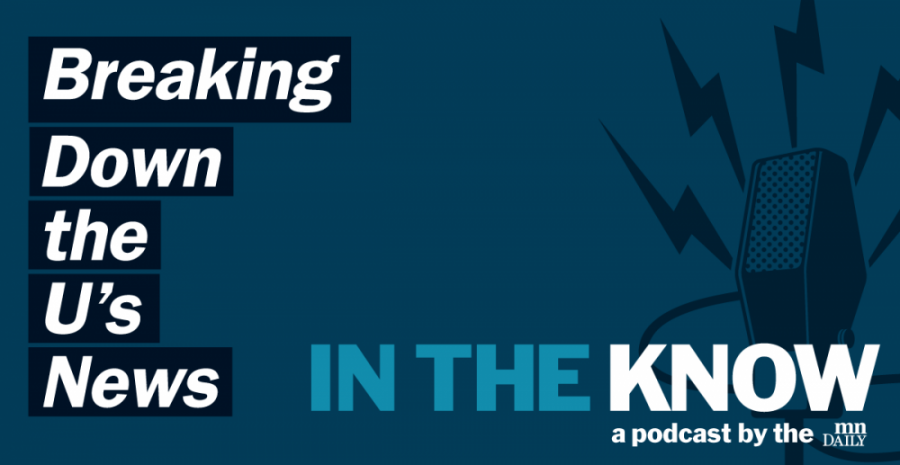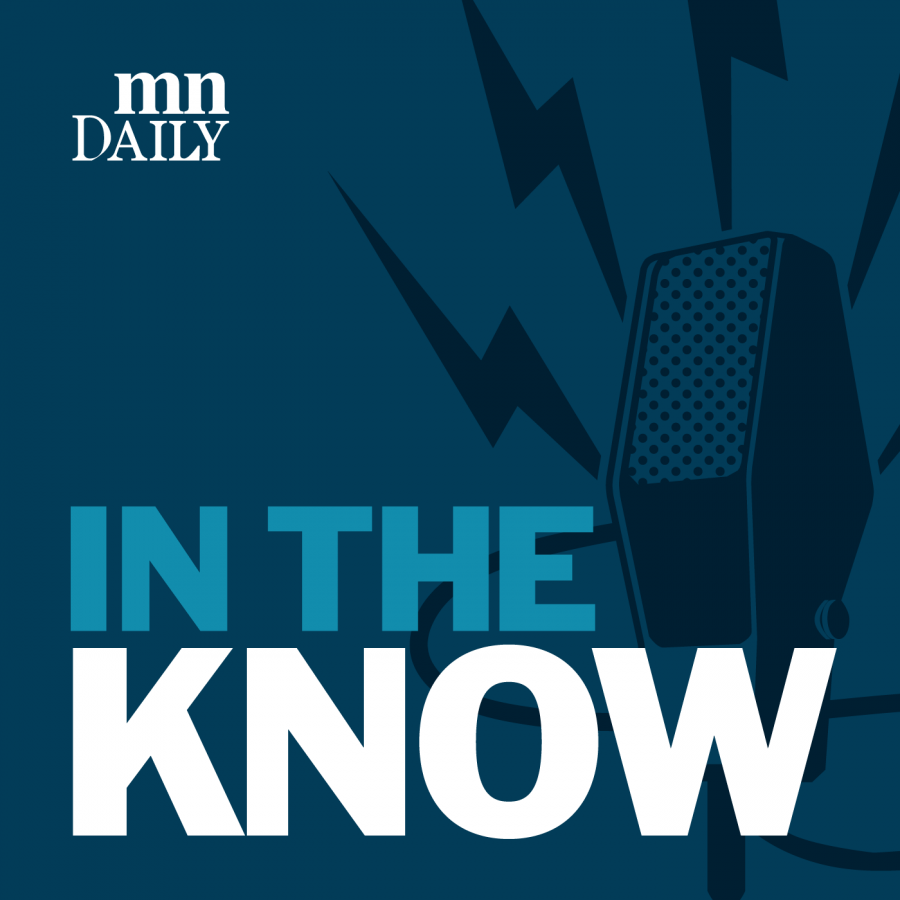MEGAN PALMER: Hey everyone, and happy Thursday. As the effects of the killing of George Floyd continue to ripple throughout the world, the team at In The Know is continuing our examination of its context and aftermath. This week, reporter Nat Jacobwith is taking a deep dive into the violent history of the Minneapolis Police Department. Please be advised that this episode contains strong language.
NAT JACOBWITH: Welcome back to “In the Know.” I’m one of your new reporters, Nat Jacobwith, and I am thrilled to be here with all of you today.
These past few weeks have been historic for Minnesota. George Floyd was a Minneapolis resident referred to by family and friends as a “gentle giant” and a loving father. Floyd was killed by Minneapolis Police on May 25th. Since then, a lot has transpired: Massive protests erupted across the state, leading to the Minneapolis City Council committing to defunding the Minneapolis Police Department. The University of Minnesota cut ties with the Minneapolis Police, and all four officers involved in the killing of George Floyd have been arrested.
As we look to the future, it is important to look at how we got where we are right now. People across the country were shocked by the news showing then-officer Derek Chauvin kneeling on Floyd’s neck for 8 minutes and 46 seconds. However, Floyd’s death is the latest in a long history of abuses by Minneapolis Police. So, let’s have a University conversation about a statewide issue.
“ACTIONS SPEAK LOUDER THAN WORDS” CHANTS AT THE STUDENTS FOR A DEMOCRATIC SOCIETY RALLY — FADE IN, FADE OUT
PETER VANKOUGHNETT: My name is Peter VanKoughnett. I am an organizer with MPD 150. I’ve been part of the core group almost since the beginning of the project.
We are an organization shifting the narrative around policing to have people see police abolition as the only viable solution for substantive change.
JACOBWITH: MPD150 is a network of activists, researchers, artists and community members. Their website has a timeline of Minneapolis Police violence starting in 1900, and a large part of their project has been compiling the history of the Minneapolis Police Department. All records are available to the public on their website.
VANKOUGHNETT: To us, we see trying to reform the police department as the really, like, naive approach and ours is the concrete one.
When it was established, the police were completely untrained, didn’t wear a uniform, drank so often on duty that they had to prohibit them from entering saloons. They terrorized sex workers, they terrorized people of color, they were responsible for breaking lots of strikes in the late 1800s through the 1930s. And then as it became more modernized and professionalized, they were just really responsible for violence towards communities of color here, and I think that’s like a lot of what we’ve seen in the last 60 years.
JACOBWITH: MPD150 shows how the history of the Minneapolis Police is characterized by acts of violence, but communities of color, and specifically Black and Native communities, put up with smaller acts of violence and intimidation every day. The Minneapolis Police and University of Minnesota Police did not respond for comment.
“COPS AND KLAN GO HAND IN HAND” CHANTS AT THE SDS RALLY — FADE IN, FADE OUT
MONIQUE COLLARS-DOTY: I am Monique Collars-Doty. I am a political activist. I became an activist after my nephew Marcus Golden was killed.
JACOBWITH: St. Paul Police Officers Jeremy Doverspike and Dan Peck shot and killed 24-year-old Golden in 2015. Golden was shot in the back of the head in his car a few hundred yards from the trauma center at the Regions Hospital in St. Paul, but he was never taken to that hospital.
COLLARS-DOTY: After I saw how the police can manipulate information and how when the police give an account it is considered to be valid and to be truthful because people are so trusting of the police, that really disturbed me.
JACOBWITH: Collars-Doty saw how the police mischaracterized her nephew as suicidal after he was killed by two officers and the damage that did to her community’s relationship with police. She started a Facebook page called “Blue Lies Matter” that acts as a public forum for residents angry about police brutality.
Policing came from slave patrols hunting escaped African people and corralling Indigenous people onto reservations. The police have always been about protecting property and not people, Collars-Doty said. She also mentioned an FBI report from about 15 years ago showing white supremacists actively pursuing careers in law enforcement to carry out their agendas. She said policing is often violent toward marginalized communities, just like slavery was.
COLLARS-DOTY: Slavery is bad. There are a lot of problems with it. But then some people might say, ‘Oh, this plantation owner is nice. He takes good care of his enslaved African people. So maybe we just need to reform slavery.’
The system of slavery was unethical, it was cruel, it’s something that no people should ever experience, and it upheld and supported and promoted white supremacy and white privilege, and we’re still suffering from that today, so the system of slavery had to be abolished. Policing, the system of police, everything is made so that we would believe that we need police.
Police are also still needed to what? To protect private property, to protect businesses. They are here to maintain and establish and uphold the status quo.
JACOBWITH: Collars-Doty also said marginalized communities can be especially vulnerable in rural Minnesota. For example, Indigenous Minnesotans also experience over-policing. Often, there are fewer people to speak up on their behalf and small police departments often have less oversight.
COLLARS-DOTY: Right, so when they have someone who gets killed, where are they going to go? Who are they going to turn to?
JACOBWITH: She also said Minneapolis Police has a federation. The Minneapolis Police have a history of using their connections with businesses to suppress and kill union members during riots in exchange for more unchecked authority in their cities. So, unions do not want police to claim the same organizational structure they helped suppress.
“MONEY FOR SCHOOLS, NOT POLICE” CHANTS AT THE SDS RALLY — FADE IN, FADE OUT
JACOBWITH: Students for a Democratic Society is a student organization on campus that has been calling to defund police on campus for a few years now. One week after police killed Floyd, a large group protested outside of the University President Joan Gabel’s mansion.
SDS PROTESTER 1: We don’t need more cops on campus. And that ultimately, we defund the police force on campus. What we really need is more mental health services that help create a safe space for us. There is so much that we deal with on a day-to-day basis. So they need to make sure that they help us during our time at the University of Minnesota. That’s a given.
This isn’t political. Our safety is not about politics, it’s common sense. So let’s keep our foot on the gas and get what we rightfully deserve.
JACOBWITH: The protesters voiced frustration that President Joan Gabel had been disingenuous in the interview process when she claimed she was open to defunding the police department. Since she became President, they said she has not made significant efforts to help minority students feel more included on campus. Gabel eventually came out and addressed the protestors.
SDS PROTESTER 2: Joan, I have a question. Are you open to limiting the amount of money you give to police and redistributing that money to student organizations like MSA, BSU and multicultural organizations on campus as well as mental health resources? Is that something you’re open to?
JOAN GABEL: What I’m open to is getting the resources to the organizations that you describe while also investing in your safety. That is where we disagree is that you see it as an either-or, and I see it as a yes-and. And I think it’s okay that we disagree. I want to try to find a compromise within that space. I don’t want to change your mind, that’s not why I’m here, but I do want to find common ground with you.
JACOBWITH: Gabel went on to say that while the protesters said they did not feel safe with the current police force on campus, other students did, and she would not consider getting rid of the police.
“WHOSE MANSION? OUR MANSION. WHOSE FUCKING MANSION? OUR FUCKING MANSION.” CHANTS AT THE SDS RALLY — FADE IN, FADE OUT
JACOBWITH: Students have been protesting all over the Twin Cities in the past few weeks, but the University has a history of student activism. August Nimtz, a political science professor at the University of Minnesota, remembers anti-Vietnam War protests that turned violent when police came on campus.
NIMTZ: When I came here in my first teaching job here at the University of Minnesota, yeah that spring of 1972 there was a major protest that took place on campus. The campus was closed down, students had taken over Washington Avenue in front of Coffman Union, you could probably find pictures of some of them at that takeover. There was a major march from the University to the State Capitol down River Road, so the University was pretty much in turmoil. So that was kind of the end of the anti-Vietnam War movement.
JACOBWITH: He said that it was during these spring protests that the Minneapolis Police were brought on campus to halt demonstrations.
NIMTZ: I could see the tear gas and the action from my office is on the thirteenth floor in social science tower, and I remember looking out one of the windows on the thirteenth floor, and I could see all the action, and I realized I needed to get out of my class as soon as possible and go and actually see what was actually going on.
JACOBWITH: Since he has taught here, professor Nimtz said that the University has always been fairly active for protesting.
NIMTZ: We are unique, for certainly the BIG 10 schools, in having a campus that is right in the middle of an urban area.
JACOBWITH: Professor Nimtz remembers the 1970s and the early ‘80s being quieter for the relationship between the Black community and the police, but he said things took a turn for the worse after that.
NIMTZ: It was really in the late 1980s that things really took a turn for the worse in terms of police and Black relations and it was around about 1988. There was a Black elderly couple in North Minneapolis, and they were killed in their home by the police. The police had launched some kind of incendiary device into their home supposedly looking for drugs, and they ended up getting killed. And so, that was one of the first anti-police brutality movements I was able to participate in directly, and it was out of that experience that I was able to work with, collaborate with now-Attorney General Keith Ellison. He was one of the key leaders of the anti-police brutality movement.
JACOBWITH: Nimtz said that, moving forward, it is critical that police officers who kill civilians go to jail. He said the police have been paying off victims of police brutality for a long time, and they need to face real consequences for their actions.
“I LOVE BEING BLACK.” CHANTS AT THE SDS RALLY — FADE IN, FADE OUT
JACOBWITH: Another member of the University community who is actively engaged in the anti-police brutality movement is instructor Eric Daigre.
ERIC DAIGRE: I’m a senior lecturer in the English department. I’m also a board member and volunteer with the local organization Communities United Against Police Brutality.
JACOBWITH: Daigre teaches community engagement courses that get students working in local nonprofits, adult day centers, schools and libraries. He said he loves getting to work in the trenches with some of his students at the organization CUAPB.
DAIGRE: When I was doing a year-long internship course that places students at local educational institutions, back in 2002 one of the students had come to class visibly upset and found out that a couple of kids she was tutoring, two brothers, had actually lost their father the previous week to police brutality.
JACOBWITH: Like professor Nimtz, Daigre wants more police accountability when it comes to violence inflicted on the community that they are supposed to protect, like in the case of George Floyd.
DAIGRE: They’re so unworried about prosecution, and they’re so unworried about repercussions that they actually, you know, file the police report, essentially saying, or maybe the public announcement, essentially saying, “Oh you know, we were restraining this individual. We noticed he had a medical condition so we had an ambulance called in.” And then the public got to see immediately how that public relations work was in direct contradiction to the video a Minneapolis resident took, right? And if that Minneapolis resident hadn’t taken that video, if other people weren’t there witnessing this, right, because the police made no effort to go and interview people in the community, right and investigate this, they immediately tried to control the narrative by putting out this statement, we would still be fighting be fighting with the city of Minneapolis to try to get body cam footage.
JACOBWITH: With a history of violence and little accountability, many members of the University community are looking to what policing in the future will look like while reflecting on the latest tragedy. Olivia Anizor is a third-year student, and she has been participating in peaceful protests and multiple clean-up projects across the city.
ANIZOR: My first thoughts were sadness. I grieve a lot. I think that that’s my way of processing first. I cried when I saw the video. I took time off of Instagram. I didn’t want to see any more media, but then I got super angry at the sheer racism and the sheer injustice of the police system, especially the Minneapolis Police Department that has had multiple cases of racial profiling and just police brutality in general. So then I got angry, and then to see the community express that anger, in however form that has been occurring, was just heartbreaking. I think— I don’t know I consider myself a very optimistic person, but with the blatant disregard for Black lives, it is hard to be optimistic right away, and so I was hurting with everyone else.
JACOBWITH: Anizor thinks this particular killing created such a large community movement, because people are tired of the extraordinary amount of violence and are done with the current system that enables it to happen.
Professor Kati Mohammad-Zadeh is a University of Minnesota professor whose work specializes in political tolerance. With the current community anguish, she believes good things may be to come.
MOHAMMAD-ZADEH: We’ve had a string of back-to-back murders between Ahmaud Arbery, Breonna Taylor, and then George Floyd. Two of them very violently and explicitly caught on video.
The majority of Americans today believe that African Americans suffer more brutality at the hands of police than white people do. That was not true even five years ago. That was not true three years ago. And so when you public sentiment catches up to social justice movements, you have these great push forward.
JACOBWITH: As a public sentiment becomes more politically progressive, professor Mohammad-Zadeh thinks that as demographics in the United States shift, white people may continue to be uncomfortable with growing racial diversity.
Despite their loud voices, including President Donald Trump’s, America is becoming more progressive, this. This has led to an increase in radicalized white supremacy, she said.
MOHAMMAD-ZADEH: When he says, “Make America Great Again”, and to go back to how great it was, it was before this multicultural coalition was ascendant. That is the subtext. We want to go back to before that time.
JACOBWITH: Despite the problems with police across our country, Mohammad-Zadeh thinks that our police – not the concept of policing – is what has to go.
MOHAMMAD-ZADEH: Traditional community-based policing by a diverse force can do a lot of good in a neighborhood. So, in other words, first of all, the police force has to reflect the communities that they police. They have to be diverse. We need many, many officers of color, and if a city is majority-minority, a majority people of color, then the police force should be majority people of color. You should have police officers that live in the communities that they police, and you should have police officers that are assigned to a consistent community-based beat where they are not in their cars but they are walking the streets very lightly armed, very lightly armed, without all of the militaristic paraphernalia.
JACOBWITH: As we look to the future, there are few clear answers from the past. It does not seem like a lot has changed in the last 150 years, but maybe the mainstream consciousness is finally catching up to the mistreatment of marginalized Minnesotans.
PALMER: Thank you for tuning in. We’ll see you next week.










